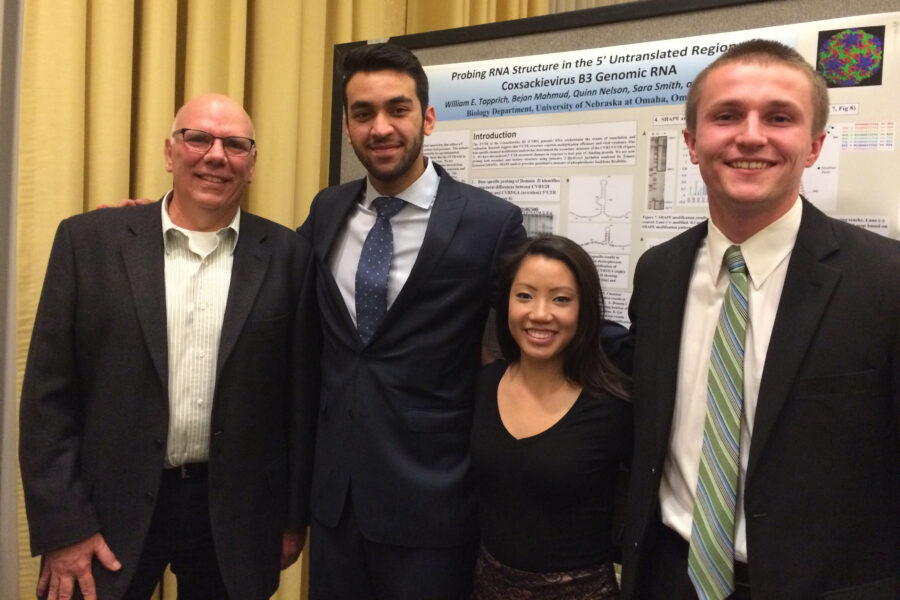2001 was a game changer for UNMC researcher Bill Tapprich, PhD.
That was the year the Institutional Development Award Program (IDeA) Networks of Biomedical Research Excellence (INBRE)/ Biomedical Research Infrastructure Network (BRIN) was introduced to the state of Nebraska.
Dr. Tapprich, who joined the biology faculty at the University of Nebraska at Omaha in 1990, saw a shift that year in the research paradigm.
“Since then, there has been a true development of the research culture on the undergraduate campuses in the state,” said Dr. Tapprich, who after 33 years, retires from UNO on Aug. 31.
Hired by UNO to cultivate and expand research, Dr. Tapprich said it was a struggle in the beginning.
"The campus infrastructure for grant submission, grants accounting, and hiring of research staff was not nearly as sophisticated as it needed to be," he said.
That changed with BRIN, now referred to as INBRE.
“The direct and indirect support from the INBRE program has made a big difference in the recruitment of new faculty. When I was chair of the biology department, I was able to convince good young faculty to come to UNO because there would be that baseline of support that comes with the INBRE program,” he said.
INBRE also created a community of researchers from institutions across the state, Dr. Tapprich said.
“When I came in, I felt like a lone wolf with the goal of developing a research culture on the UNO campus, with INBRE you have support in ways that aren’t financial,” he said.
INBRE provides the opportunity for collaboration, mentorship and comradery, things that only enhance and strengthen the research landscape in the state.
Over the years, Dr. Tapprich has seen how the support of the INBRE program has impacted the growth of faculty and students.
Support of infrastructure, supplies and undergraduate faculty research has evened the playing field between the smaller and larger participating institutions, resulting in students who are equally equipped walking into the lab, he said.
The idea that the Nebraska INBRE centers its program around the undergraduate network of students, and that a lot of INBRE funding goes to support and develop the research capabilities at the participating campuses, is a brilliant way to use the grant and build research capacity in the state, Dr. Tapprich said.
He said INBRE support allows faculty to invite other students, not involved in the program into their labs, where they gain insight from INBRE Scholars already working there.
“It’s also allowed me to branch out into research areas not directly related to the biomedical efforts of INBRE,” Dr. Tapprich said, adding that he has applied for and received strong support in educational and National Science Foundation grants that are part of research coordination networks.
“I would not have had the flexibility and freedom to do that if not for support from INBRE.”
Dr. Tapprich will continue to be part of the INBRE program as a member of the external advisory board, something he said he is looking forward to.
“It will be an interesting transition. I’ve known them for years and years. It will be fun to join that group and see the program from that perspective.”
